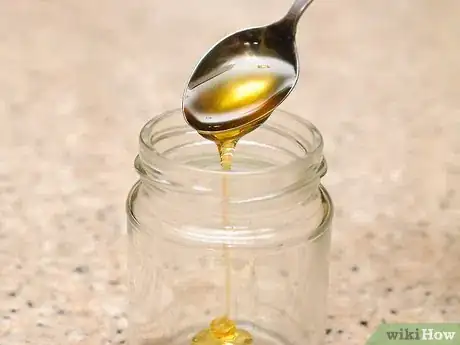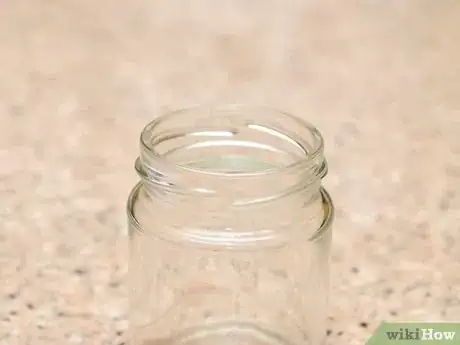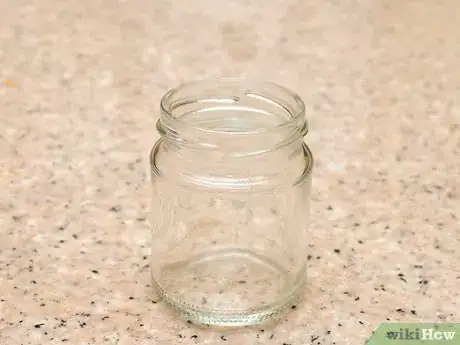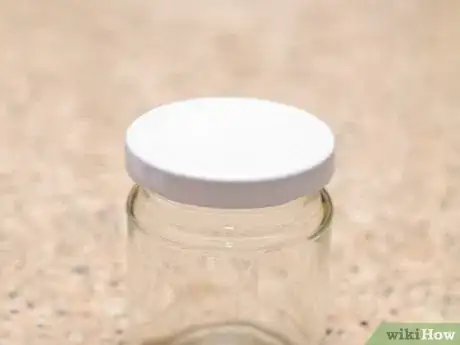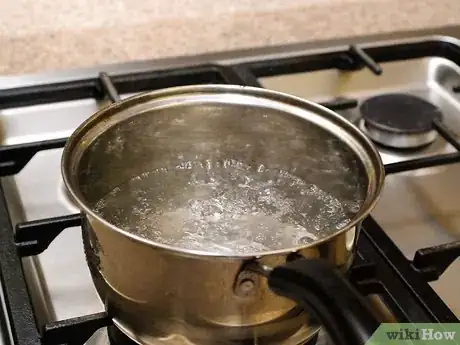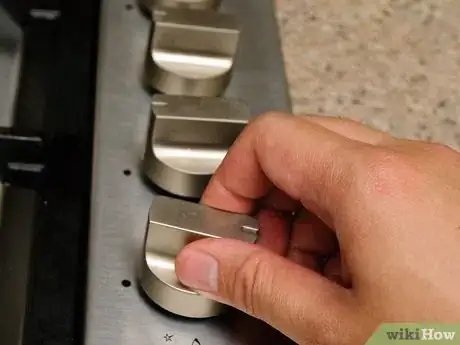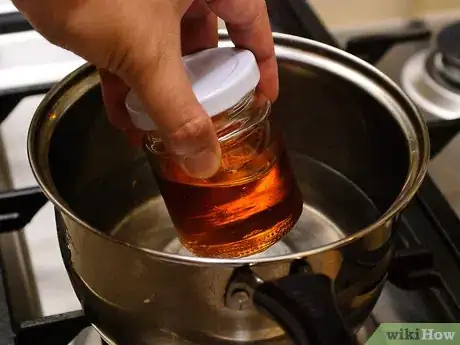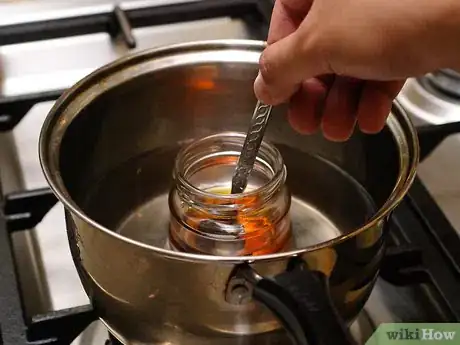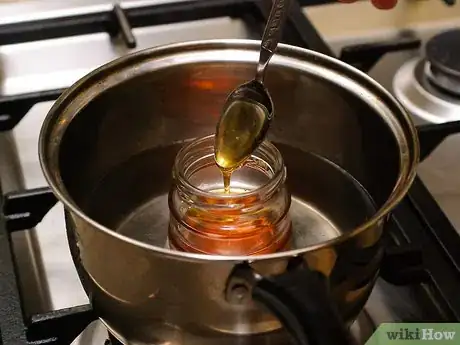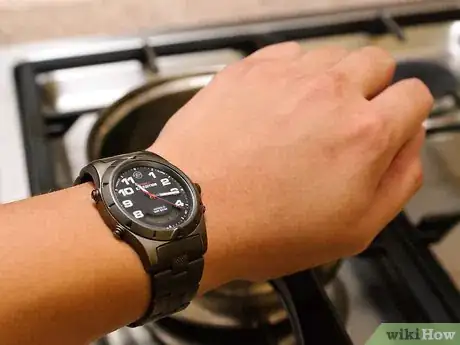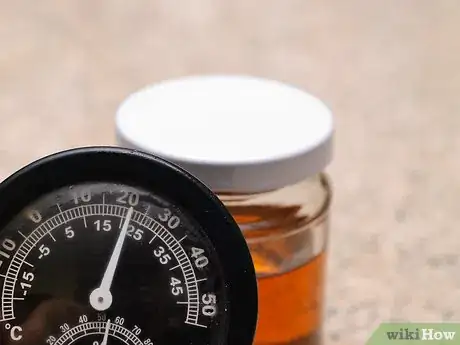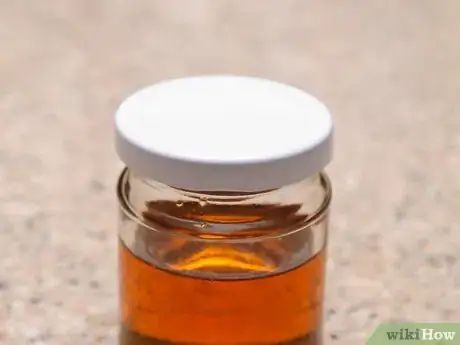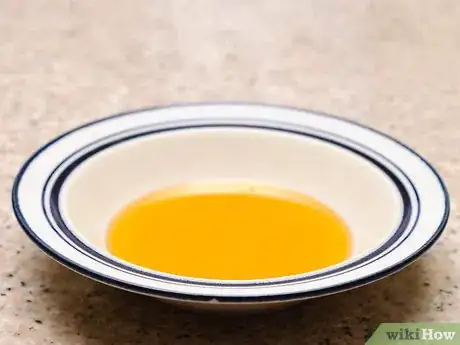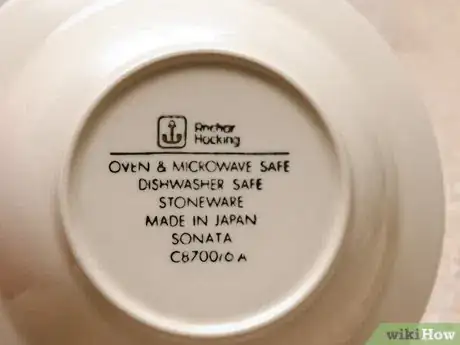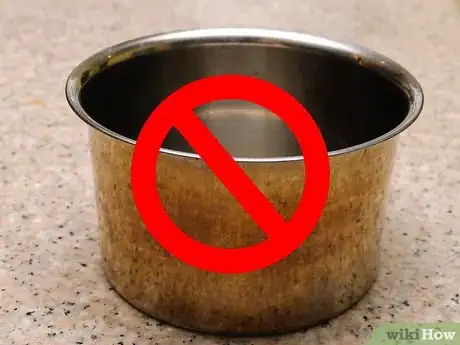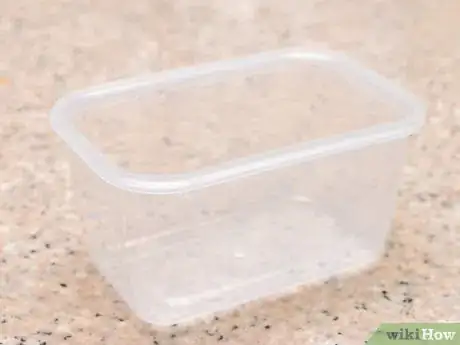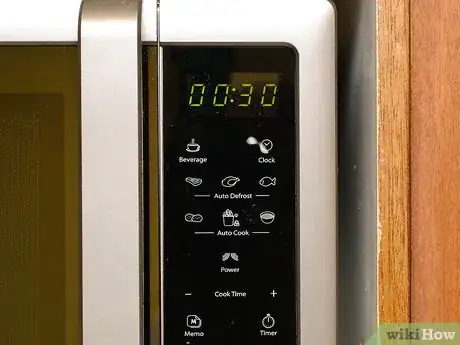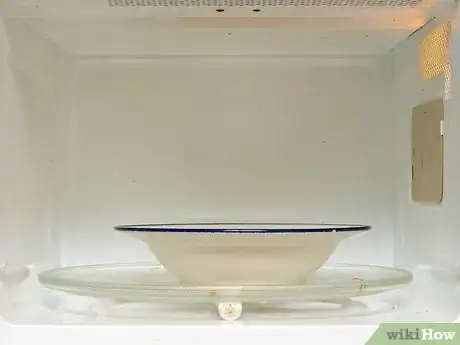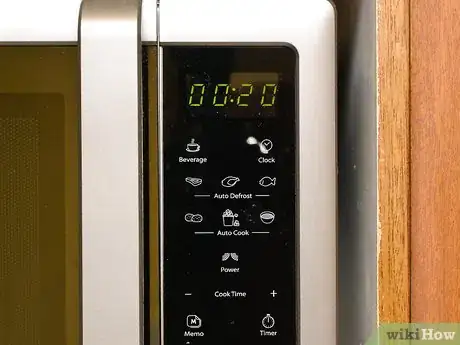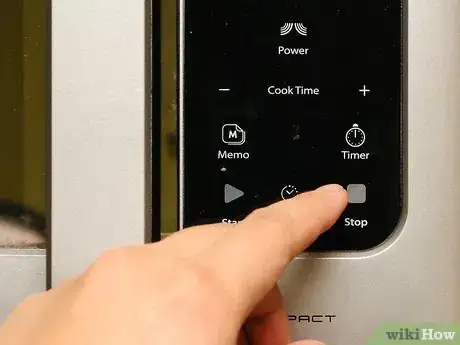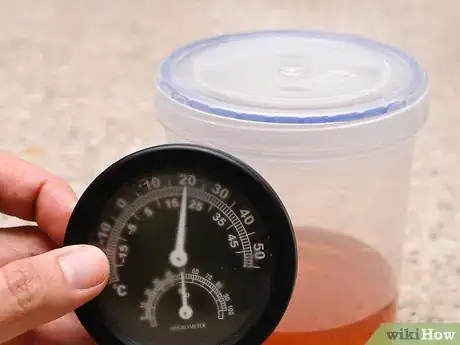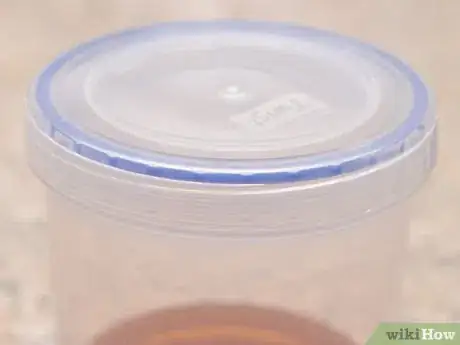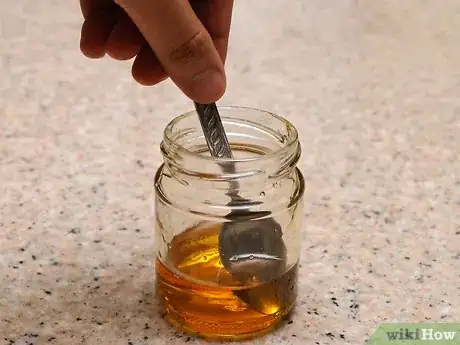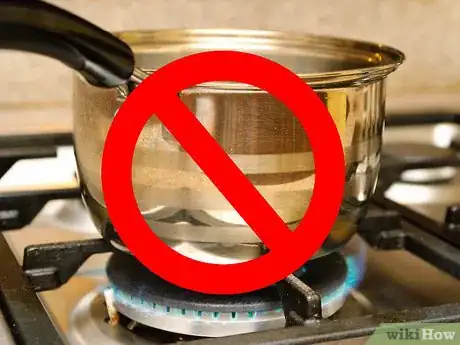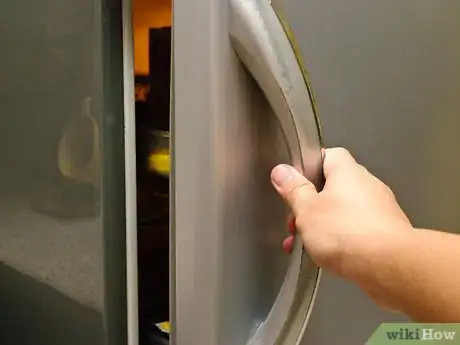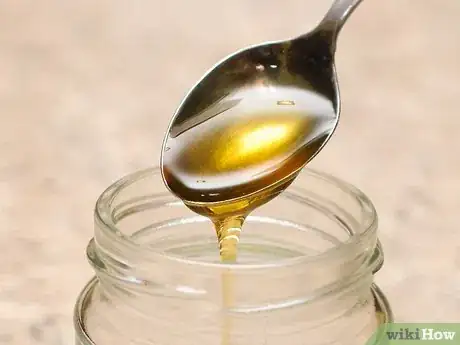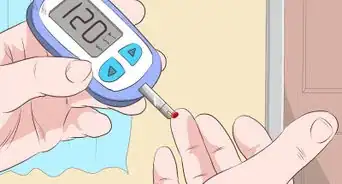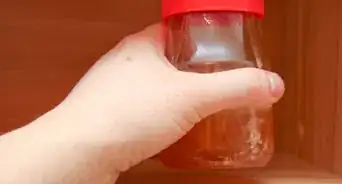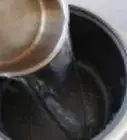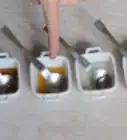wikiHow is a “wiki,” similar to Wikipedia, which means that many of our articles are co-written by multiple authors. To create this article, volunteer authors worked to edit and improve it over time.
This article has been viewed 152,255 times.
Learn more...
There are several reasons you may need to melt honey. Fresh, raw honey has a thick consistency, but melting it can make the honey thinner and easier to use. Old honey crystallizes and becomes grainy, but melting it can remove those crystals and return it to a more palatable texture. There may also be times when you simply need to thin honey out to a more workable consistency without changing its chemical composition.
Choose a Method
- Stovetop: Slow but effective.
- Microwave: Much faster, but may cause splatter and flavor loss.[1] Raw food advocates claim it affects nutrition.
- Thinning it out: Does not remove crystals. Use for thick honey you plan to add to drinks or beauty products.
Things You'll Need
Stovetop Melting
- Spoon
- Glass jar
- Lid
- Deep saucepan
Microwave Melting
- Spoon
- Microwave-safe container
- Airtight container
Thinning It Out
- Bowl or dish
- Spoon
- Airtight container
- Refrigerator
Steps
Stovetop Melting
-
1Spoon the honey into a glass jar. Transfer all the honey you want to melt into a tall, room temperature glass jar with a lid. Loosely cover the jar.
- A glass jar is the ideal container since the glass can withstand hot temperatures while also allowing that heat to be transferred to the honey inside.
- Make sure that the jar you use is room temperature, though, and not cold. Glass can shatter under extreme changes in temperature.
- Using a lid will help prevent water from accidentally getting inside the jar and into the honey. A lid is not strictly necessary, though, especially if the jar is fairly tall.
-
2Boil a saucepan of water.[2] Fill a deep saucepan roughly halfway with water. Place this saucepan on the stove over high heat, keeping it there until it reaches a rolling boil.
- Before boiling the water, make sure that you have enough water in your saucepan to melt the honey. Place the jar inside the saucepan and check the water level. The level of water should approximately match the level of honey inside the jar.
Advertisement -
3Remove the pan from the heat. After the water reaches a steady boil, remove it from the stove and set it down on a heat-resistant surface.
- Alternatively, you can keep the water on the stove and reduce the heat to low. Before placing the jar of honey in the water, though, you need to make sure that all simmering stops. Hot temperatures will not make the honey inedible, but temperatures above 110 degrees Fahrenheit (38 degrees Celsius) can destroy some of the beneficial health properties of the honey.
-
4Lower the honey into the water. Sit the jar of honey directly on the bottom of the pan so that it is now surrounded on all sides by hot water.
- If you are using a lid, make sure that the lid is on very loose. You want to prevent water from getting inside while allowing air to escape. If you tighten the lid too much, pressure could build up inside of the jar and cause the glass to crack.
-
5Stir the honey. Periodically remove the lid and stir the honey while the jar is still sitting inside the hot water. This can help the honey melt more evenly and at a quicker pace.
- Continue doing this until the honey melts. If you are trying to melt crystallized granules out, keep at it until you no longer see any crystals left. If you are trying to melt thick, raw honey, continue melting it in the hot water until it thins to the consistency of store-bought honey.
- This process can take a long time depending on how much honey you have. Expect to wait anywhere from 20 to 60 minutes.
-
6Store at room temperature. When done, remove the jar from the water and dry it off with a clean dish towel. Tighten the lid on securely and store the honey at room temperature until you are ready to use it.
- The ideal storage temperature is 50 to 70 degrees Fahrenheit (10 to 21 degrees Celsius).[3] At colder temperatures, the honey will begin to crystallize. You should also keep the honey away from hot, moist conditions for similar reasons.
- Make sure that the lid is airtight. Otherwise, the honey can lose moisture and start to crystallize again.
Microwave Melting
-
1Place the honey in a microwave-safe container. A thick glass container, like a glass canning jar, is usually a safe choice. Spoon the honey you need to melt into the container.
- It is best to check the container to verify that it is microwave-safe before using it. Typically, this information is labeled on the bottom of the container.
- Never use a metal container.
- Plastic containers are debatable. Many are marked as being microwave-safe, but there is some evidence that chemicals from plastic can leech into the contents of the container when heated.
-
2Microwave on medium power.[4] Place the container of honey in your microwave. Set the power to 50 percent, then microwave the honey for 30 to 40 seconds.
- The exact amount of time can vary based on how powerful your microwave is and how much honey you have inside the container.
- Keep an eye on the honey as it melts inside the microwave. If it appears fully melted before the full amount of time passes, stop the microwave and remove the container.
-
3Stir the honey. Carefully remove the container of honey from the microwave. Stir the honey with a spoon to distribute the heat. If some of the honey has not yet melted, return the container to the microwave and heat for another 20 seconds at medium power.
- Repeat this process as needed. Heat the honey in 20-second intervals at 50-percent power, stirring after each interval, until the honey melts.
- If you are trying to decrystallize honey, stop heating it once you can no longer spot any crystals. If you only want to melt honey to a thinner consistency, simply stop heating it once it has become thin enough for your liking.
-
4Store melted honey at room temperature. Pour the melted honey into an airtight storage container. Store that container in a dry, room temperature location until you need to use the honey.
- The ideal temperature range is between 50 and 70 degrees Fahrenheit (10 and 21 degrees Celsius). Colder and hotter temperatures can speed up the crystallization process. Moist conditions should also be avoided.
- The container must be an airtight one if you want to prevent moisture loss and crystallization.
Thinning It Out
-
1Mix a little water into the honey. Spoon some honey into a small jar or dish. Add fresh water to the honey, 1 Tbsp (15 ml) at a time, mixing after each addition. Continue until the honey reaches your desired consistency.[5]
- No heat is required for this method.
- Since you aren't actually melting the honey in this process, you cannot use this method to decrystallize hardened honey.
- In addition to thinning out the honey, water will also dilute the taste.
- The exact amount of water you need will depend on how thin you want the honey to be and how strong you want the flavor to remain. Typically, though, you will not want to exceed a ratio of equal parts honey to water.[6]
-
2Store in the refrigerator. While undiluted honey is best stored at room temperature, a honey syrup like this is best stored in the refrigerator. This thinned out honey will only last for about three weeks, though.
- After three weeks pass, the honey will start to lose its flavor and may show signs of crystallizing.
- Store this thin honey syrup in an airtight container to prevent moisture loss.
-
3Finished.
Community Q&A
-
QuestionWhat is the best method of thinning honey to make it suit skin creams?
 Community AnswerMelt it and add a bit of warm water to thin it out.
Community AnswerMelt it and add a bit of warm water to thin it out. -
QuestionWhich method of thinning honey is best for mixing it into my skin cream easily?
 Community AnswerPlace the bottle containing the honey in hot water for a little while. That should do the trick.
Community AnswerPlace the bottle containing the honey in hot water for a little while. That should do the trick. -
QuestionHow do I melt frozen honey?
 Community AnswerPlace the bottle in a pot of hot (but not boiling) water and let it sit for a while. The honey will revert back to its liquid state.
Community AnswerPlace the bottle in a pot of hot (but not boiling) water and let it sit for a while. The honey will revert back to its liquid state.
References
- ↑ http://suebee.com/frequently-asked-questions/#microwave
- ↑ http://www.realfoodrn.com/how-to-melt-raw-honey/
- ↑ http://www.spiciefoodie.com/2012/03/14/kitchen-know-how-how-to-decrystallize-honey/
- ↑ http://www.vintageamanda.com/2010/05/how-to-soften-hard-honey-vintage-vs-modern/
- ↑ http://everydayroots.com/honey-hair-treatment
- ↑ https://imbibemagazine.com/Elements-Honey
About This Article
Whether you’re getting rid of crystals or creating a thinner consistency, you can melt honey by pouring it into a microwave-safe container and microwaving it for 30-40 seconds on medium power. Remove it and stir to distribute the heat. Continue heating it at 20-second intervals if it’s not thin enough or you can see more crystals. Store your honey at room temperature in an airtight container until you’re ready to use it. If you want to learn how to melt honey on the stovetop, keep reading the article!
